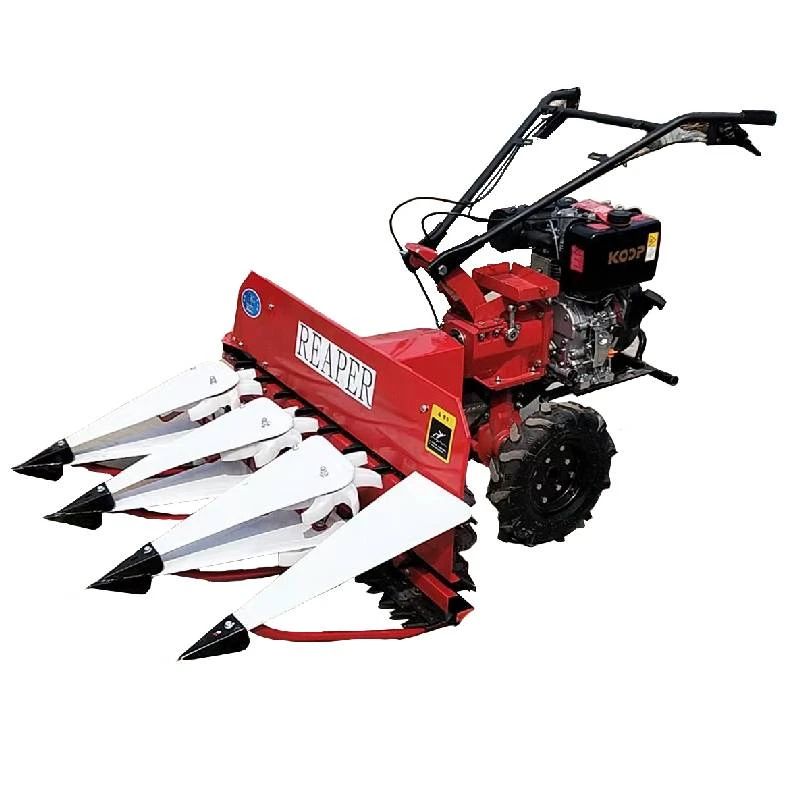wheat harvesting equipment for efficient reaping and binding in agriculture
The Wheat Cutting Machine A Revolution in Agriculture
In the ever-evolving landscape of agriculture, the wheat cutting machine, commonly referred to as a reaper-binder, has revolutionized the harvesting process. This sophisticated piece of machinery has drastically reduced the time and labor needed to harvest wheat and other cereal crops, leading to increased efficiency, productivity, and profitability for farmers.
Historical Context
The historical roots of the reaper-binder can be traced back to the early 19th century. Before its invention, harvesting crops was labor-intensive, requiring significant manual effort with sickles and scythes. The advent of the reaper, introduced by Cyrus McCormick in 1831, marked the beginning of mechanization in agriculture. However, early reapers would cut the wheat but left the stalks unbound, necessitating further manual labor to gather and tie the sheaves. This cumbersome process led to the development of the reaper-binder, which combines cutting and binding functions into one streamlined operation.
Mechanism and Functionality
A wheat cutting machine operates through a series of mechanically coordinated actions. The primary components of the machine include a cutting platform, a reel, and a binding mechanism. The cutting platform is equipped with sharp blades that slice through the wheat stalks as the machine moves forward. The reel helps uplift the cut wheat, feeding it smoothly into the binding area.
Once the wheat is cut, the binding mechanism wraps twine or string around the sheaves, automatically forming bundles. This innovation eliminates the need for manual binding, dramatically speeding up the harvesting process. Moreover, modern reaper-binders are designed with adjustable cutting heights, allowing farmers to harvest crops at optimal levels, thereby improving yield quality.
Advantages
The advantages of utilizing a wheat cutting machine are manifold. Firstly, the reaper-binder significantly reduces labor costs. In traditional harvesting, teams of workers were required to cut, bind, and transport the wheat. With a single operator required for the machine, farmers can save on wages and allocate human resources to other critical tasks.
Secondly, the speed of harvesting is greatly enhanced. A reaper-binder can harvest several acres of wheat in a single day, whereas manual methods might take weeks. This increased efficiency is particularly invaluable during peak harvest seasons when time-sensitive factors such as weather can affect crop quality.
wheat cutting machine reaper binder

Furthermore, the machine ensures consistency in harvesting. Manual methods can lead to variations in sheaf size and binding tightness, impacting storage and marketability. The automated process of the reaper-binder results in uniform sheaves, improving product quality and reducing wastage.
Challenges and Considerations
Despite its many advantages, the adoption of wheat cutting machines is not without challenges. Initial investment costs can be a barrier for small-scale farmers. While the long-term savings and increased efficiency may outweigh these costs, accessing financing for such purchases can be difficult, particularly in developing regions.
Additionally, reliance on machinery can lead to issues related to soil compaction and reduced soil health, particularly when heavy machinery is used repeatedly on the same land. Farmers must balance the benefits of mechanization with sustainable agricultural practices to maintain soil quality and ecological health.
The Future of Wheat Harvesting
Looking ahead, the future of wheat cutting machines appears promising. Technological advancements, such as GPS and automation, are already being incorporated into modern reaper-binders, enabling greater precision and efficiency. Smart farming practices are likely to enhance how these machines operate, leading to innovations such as autonomous harvesting systems.
Moreover, as climate change continues to impact agricultural practices globally, the adaptability of reaper-binders will be essential. Machines that can function effectively in varying conditions and terrains will become increasingly valuable as farmers face new challenges.
Conclusion
The wheat cutting machine, or reaper-binder, represents a pivotal advancement in agricultural technology. By streamlining the harvesting process, it provides farmers with significant economic benefits while ensuring a consistent quality of produce. As agriculture continues to evolve, embracing innovations like the reaper-binder will be crucial in meeting food demands and supporting sustainable farming practices worldwide. With ongoing advancements, the future of wheat harvesting is set to become even more efficient and environmentally friendly, empowering farmers to thrive in the face of modern challenges.
Latest news
-
When to Upgrade Your Old Forage HarvesterNewsJun.05,2025
-
One Forage Harvester for All Your NeedsNewsJun.05,2025
-
Mastering the Grass Reaper MachineNewsJun.05,2025
-
How Small Farms Make Full Use of Wheat ReaperNewsJun.05,2025
-
Harvesting Wheat the Easy Way: Use a Mini Tractor ReaperNewsJun.05,2025
-
Growing Demand for the Mini Tractor Reaper in AsiaNewsJun.05,2025







